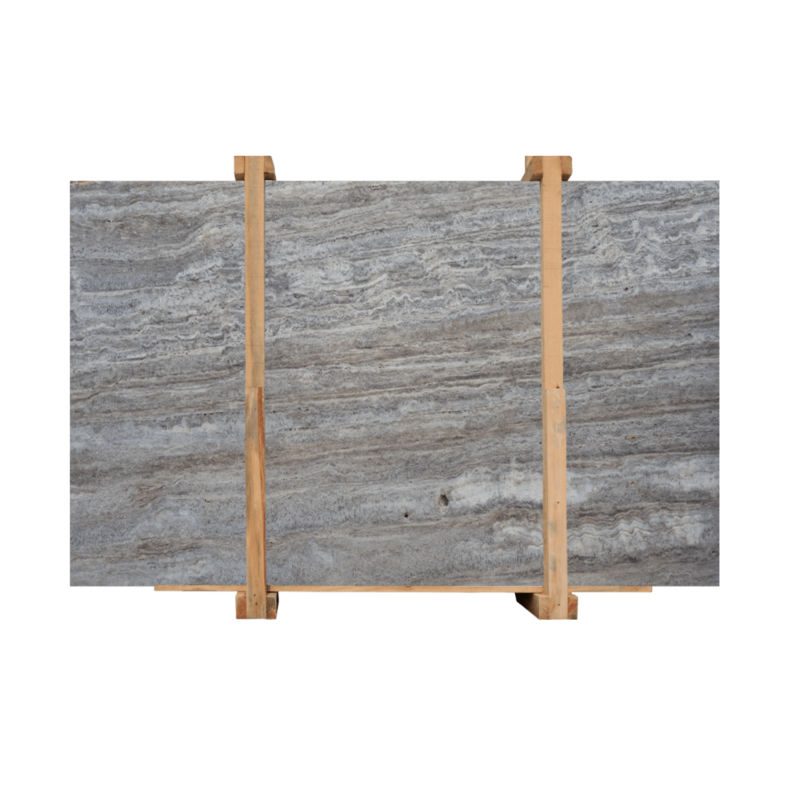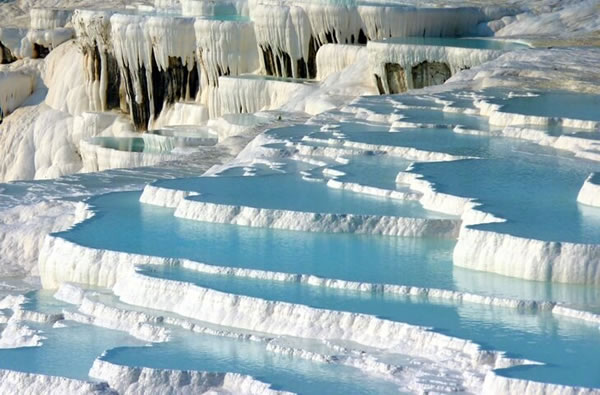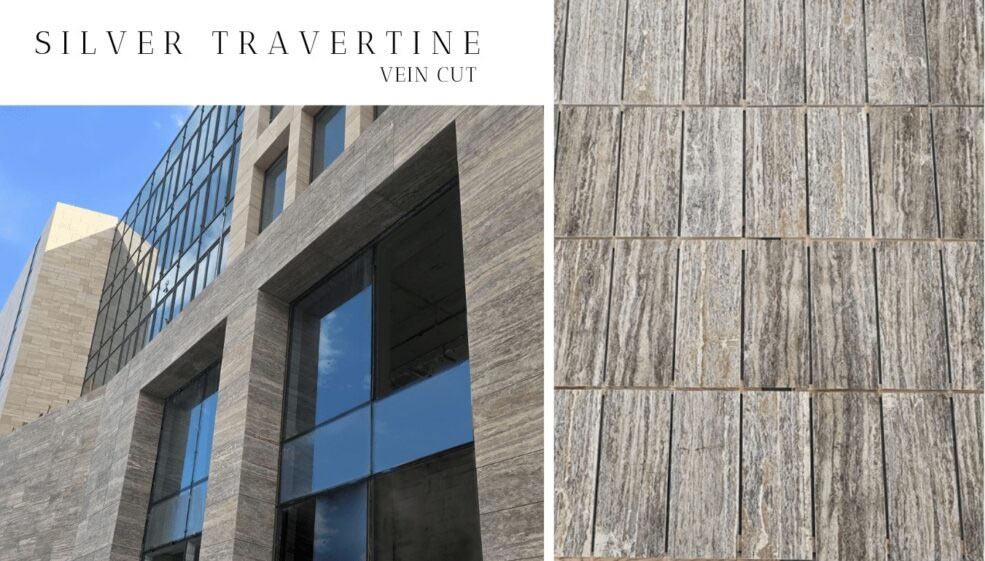Travertine tile, a timeless and elegant natural stone, has been a favorite choice of architects, designers and homeowners for centuries. Formed from mineral deposits in hot springs and limestone caves, this versatile material offers a unique blend of durability and aesthetic appeal. With its distinctive pitted surface and warm, earthy tones ranging from ivory to walnut, travertine tile brings a touch of Old World charm to any space. Whether used for flooring, wall coverings or outdoor applications, travertine tile can transform ordinary rooms into extraordinary showcases of natural beauty. In this comprehensive guide, we’ll explore the characteristics, applications and care of travertine tile to help you determine if this classic stone is the right choice for your next project.
Travertine is a natural stone that has become increasingly popular in modern home design. This unique material is formed from limestone subjected to heat and pressure, often found near hot springs. Its significance lies in its rustic charm combined with contemporary sophistication, making it an ideal choice for various applications.
Types of Travertine Tile
When choosing travertine tile, it’s important to explore the types of travertine tiles and understand the different varieties available. This natural stone comes in a variety of shapes, each with different characteristics that can suit different design preferences. For example, silver travertine offers a sleek and modern look, while osso travertine and alabastrino travertine offer softer, creamier tones that add warmth to interiors.
If you’re looking for a rustic aesthetic, Tuscan travertine is an excellent choice, while Turkish travertine from the Denizli quarries is known for its high quality tiles and durability. Ivory travertine and Roman travertine are also popular options that add elegance to any space. Consider honed travertine for a smooth finish that works well as a stylish backsplash or bathroom floor.
In addition, tumbled travertine tile is great for adding texture to traditional designs or as a stunning travertine floor that complements rustic décor. If you’re interested in textured options, consider tumbled tiles for a more textured finish that complements traditional designs. Also, for areas where you want both beauty and practicality, consider honed infill travertine, which can withstand heavy foot traffic while maintaining its elegance.
Definition and Distinct Features
Travertine tile is characterized by its:
● Porous surface: This attribute contributes to its distinct texture and aesthetic appeal.
● Pitted holes: These naturally occurring features add to the tile’s charm and individuality.
Color Variations and Finishes
Travertine offers a diverse range of color options, including:
● Beige
● Cream
● Gray
● Brown
In addition to color variations, travertine tiles come in multiple finishes such as honed (matte), polished (shiny), tumbled (natural), brushed (antique), and saw cut (matte). Each finish enhances the stone’s appearance and allows for versatility in design. The combination of these factors makes travertine a sought-after choice for both indoor and outdoor spaces.

Filled Travertine vs. Unfilled Travertine
● Filled Travertine: This type has been treated with a resin or cement to fill in the natural pits and holes. The result is a smoother surface that is easier to clean and maintain. Filled tiles are often favored for indoor applications where a polished look is desired.
● Unfilled Travertine: This option retains its natural texture, showcasing the stone’s distinctive pitted appearance. Unfilled tiles offer a rustic charm and are often used in outdoor settings due to their slip-resistant qualities.
Finishes
Different finishes enhance the aesthetic appeal and usability of travertine tiles:
● Honed Finish: Provides a matte surface with a subtle sheen. It is less slippery than polished tiles, making it suitable for bathrooms and kitchens.
● Polished Finish: Offers a glossy surface that reflects light beautifully. Polished tiles elevate spaces but may be slippery when wet, so consider placement carefully.
● Tumbled Finish: Results in a textured, antique appearance with rounded edges. Tumbled tiles are ideal for outdoor areas, providing durability and slip resistance.
● Brushed Finish: Achieves a soft, textured look through brushing techniques. Brushed travertine combines elegance with practicality, fitting well in both modern and traditional designs.
Pros and Cons of Natural Stone Travertine Tile
Understanding the pros and cons of travertine tile is essential to making an informed decision about incorporating it into your interior design. By recognizing these advantages and disadvantages, you can better appreciate the overall pros and cons of travertine.
Advantages of Travertine Tile
● Aesthetic Appeal: Travertine adds a luxurious, timeless charm to any space. Its unique textures and color variations create visual interest.
● Durability: Resistant to moisture and wear, travertine is ideal for high-traffic areas, including kitchens and bathrooms.
● Versatility: Suitable for both indoor and outdoor applications, it can be used in various settings such as patios, pool decks, and wall cladding.
● Natural Insulation: The porous nature of travertine helps maintain comfortable temperatures in warm and cool environments.
Disadvantages of Travertine Tile
● Porosity: While this feature allows for beautiful finishes, it also makes travertine susceptible to staining if not sealed properly. Regular maintenance is crucial.
● Slipperiness: Polished travertine can be slippery when wet, making it less ideal for certain outdoor applications unless treated with anti-slip solutions.
● Cost Variation: Although generally affordable compared to other natural stones, prices can fluctuate significantly based on quality and finish.
● Installation Complexity: Proper installation requires skilled labor to ensure durability and prevent cracking or uneven surfaces.

Exploring Different Applications for Travertine Tile
Travertine tile is a versatile choice for a variety of indoor and outdoor applications. Its aesthetic appeal and durability make it a preferred option in many home designs, especially interior projects. Whether you’re considering installing travertine tile for your living room or using outdoor pavers for your patio, this durable stone tile offers both beauty and functionality. Plus, its eco-friendly materials ensure that you are making a sustainable choice while enjoying Efesus Stone’s expert customer service.
Indoor Applications of Travertine Tile
● Kitchens: Travertine tiles can enhance the beauty of kitchen spaces. They are often used for countertops, backsplashes, and flooring. The natural texture and warmth of travertine complement modern cabinetry and stainless appliances.
● Bathrooms: In bathrooms, travertine provides a luxurious feel. It works well for shower walls, flooring, and vanity tops. The stone’s resistance to moisture makes it an ideal choice for wet areas.
● Wall Cladding Designs: Using travertine as wall cladding adds dimension and sophistication to any room. Its unique pitted surface creates visual interest while maintaining a cohesive design theme.
Outdoor Applications of Travertine Tile
● Pool Decks: The slip-resistant properties of unpolished travertine make it an excellent choice for pool decks. It stays cool to the touch even on hot days.
● Patios and Backyard Paving: Travertine enhances outdoor living spaces with its elegant appearance. Its durability withstands harsh weather conditions while providing a beautiful backdrop for entertaining.
Travertine tile can be used in many places, from kitchens to outdoor patios, showcasing its versatility in both looks and usefulness.

Design Ideas and Trends
Travertine tile offers an array of design possibilities that can enhance any space with its unique travertine aesthetic. Popular patterns include honed tiles for elegant backsplashes and durable stone tile options that are perfect for both interior design and outdoor paving. When considering travertine tile installation, it’s important to choose high-quality tiles that not only enhance the beauty of your home, but are also eco-friendly materials.
● French Pattern: This layout combines various tile sizes, creating a sophisticated and timeless look.
● Herringbone: A classic pattern that adds dynamic movement and visual interest to floors and walls.
Color variations in travertine range from soft beiges to rich browns and deep grays. These hues can be complemented by other design elements, such as:
● Contrasting Grout: Using a darker grout can highlight the unique textures of travertine while providing a modern touch.
● Natural Wood Accents: Pairing travertine with wooden elements creates a warm, inviting atmosphere, perfect for kitchens or living areas.
The versatility of travertine allows it to blend seamlessly with various styles, from rustic farmhouse to contemporary minimalist. Consider incorporating colored accessories or furnishings that resonate with the chosen travertine shades, enhancing the overall aesthetic appeal of your interiors. The natural beauty of this stone makes it an attractive choice for those looking to create lasting impressions in their home design.

Comparing Different Types of Travertine Tiles
When choosing travertine tiles, understanding the differences between polished and unpolished finishes is essential to effectively compare flooring options.
1. Polished Travertine Tiles
● Aesthetic Appeal: Offers a glossy, reflective surface that enhances color depth.
● Maintenance: Requires more frequent cleaning to maintain shine; susceptible to scratches.
2. Unpolished Travertine Tiles
● Aesthetic Appeal: Features a matte finish with a natural look, highlighting the stone’s texture.
● Maintenance: Easier to maintain; more resistant to scratching and slipping, making it ideal for wet areas.
Travertine vs. Marble
● Durability: Travertine is generally more durable and less prone to chipping than marble.
● Cost: Travertine tends to be more budget-friendly without compromising on elegance.
Travertine vs. Limestone
● Porosity: Travertine is more porous than limestone, which affects sealing and maintenance.
● Visual Characteristics: Travertine often features pitted holes and unique patterns not found in limestone.
Maintaining and Cleaning Your Travertine Tiles
Regular upkeep is essential for the longevity of your travertine tiles. Their porous nature requires consistent maintenance to prevent staining and preserve their natural beauty. Here are key points to consider for proper care:
Daily Care
● Sweep or dust mop regularly to remove dirt and debris.
● Use a damp cloth or mop with a pH-neutral cleaner specifically designed for natural stone.
Deep Cleaning
● For stubborn stains, use a pH-neutral cleaner with a soft-bristle brush.
● Avoid acidic or abrasive cleaners, which can damage the surface.
Resealing
● Sealing is crucial before installation and should be repeated every 1-3 years, depending on traffic and usage.
● Check the sealant’s effectiveness by sprinkling water on the surface; if it soaks in, it’s time to reseal.
Using appropriate cleaning solutions ensures that your travertine tiles maintain their luster while preventing deterioration. Understanding these maintenance practices will help you enjoy the timeless elegance of travertine throughout your home.
Cost Considerations When Choosing Travertine Tile for Your Home
When considering travertine tile cost, several factors influence the price, which typically ranges from $3 to $30 per square foot. Understanding these variables helps you make informed decisions:
● Quality and Grade: Higher-grade tiles often cost more due to superior aesthetics and durability.
● Finish Type: Polished finishes tend to be pricier compared to honed or tumbled options.
● Color Variations: Rare colors or unique patterns can command higher prices in the market.
● Size and Thickness: Larger and thicker tiles often incur increased costs due to material usage.
● Supplier Reputation: Established suppliers may charge more for quality assurance and service.
Evaluating these considerations ensures that your investment in travertine tile aligns with your aesthetic preferences and budget. The right choice enhances the beauty of your space while providing lasting value.
Conclusion: Embrace the Timeless Elegance of Travertine in Your Home Design Journey!
Incorporating travertine tile into your home enhances both aesthetic appeal and functionality. This luxurious natural stone offers:
● Unique texture with its distinctive pitted holes
● Versatile color palette, ranging from beige to rich browns
● Durability, making it suitable for high-traffic areas
Consider the benefits of travertine in homes. Its ability to blend rustic charm with modern sophistication creates an inviting atmosphere. As you explore your design options, remember that travertine can elevate any space, providing a timeless elegance that complements various styles. Embrace this stunning material for your upcoming projects.
FAQs about Travertine Tile
What is travertine tile?
Travertine tile is a natural stone formed from limestone that undergoes heat and pressure, commonly found near hot springs. Its unique pitted appearance and porous texture set it apart from other stones.
Is travertine tile suitable for outdoor use?
Yes, travertine tile’s slip-resistant properties, especially in unpolished finishes, make it ideal for outdoor areas like patios, pool decks, and walkways.
How do I maintain my travertine tiles?
Regular maintenance includes:
● Sealing prior to installation to prevent staining
● Cleaning with pH-neutral solutions
● Avoiding harsh or acidic cleaners
Can travertine be used in wet areas?
Absolutely. The moisture resistance of travertine makes it suitable for kitchens and bathrooms.
What are the color options available for travertine tiles?
Travertine comes in various colors including beige, cream, gray, brown, and even red. This variety allows for versatile design applications.
How much does travertine tile cost?
Prices typically range from $3 to $30 per square foot depending on type, finish, and quality. This pricing makes it an economical alternative to other natural stones like marble.

 Türkçe
Türkçe Deutsch
Deutsch العربية
العربية Français
Français Español
Español